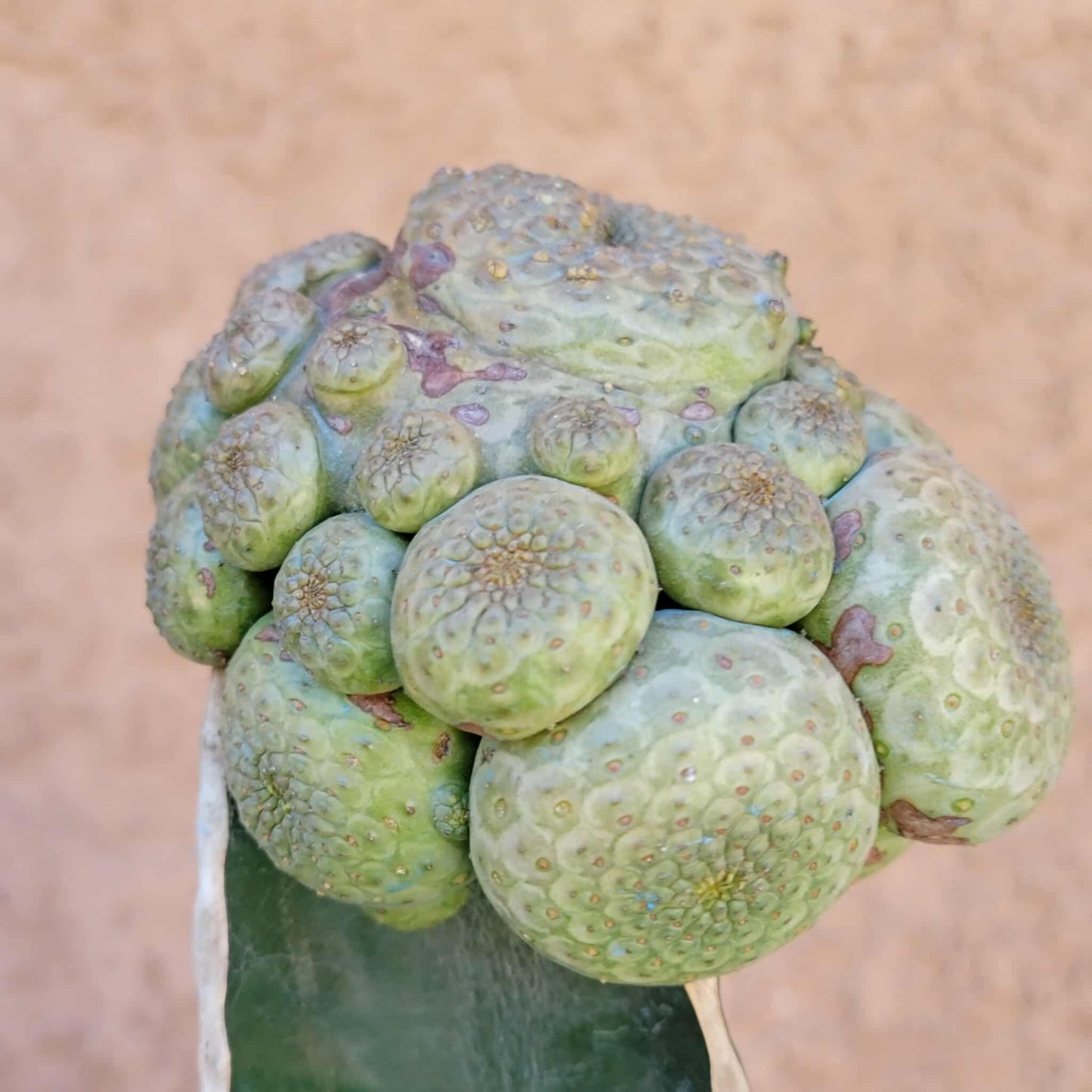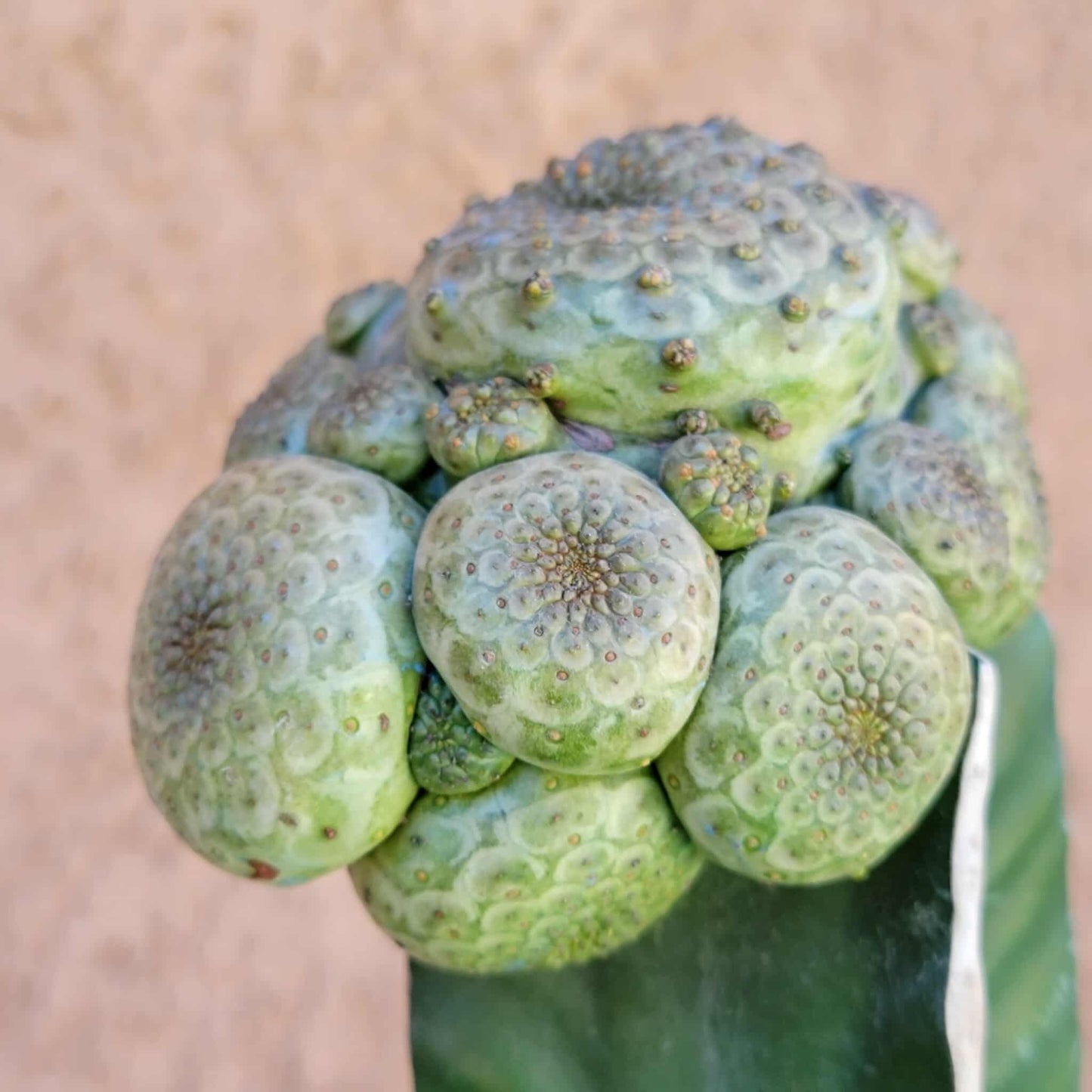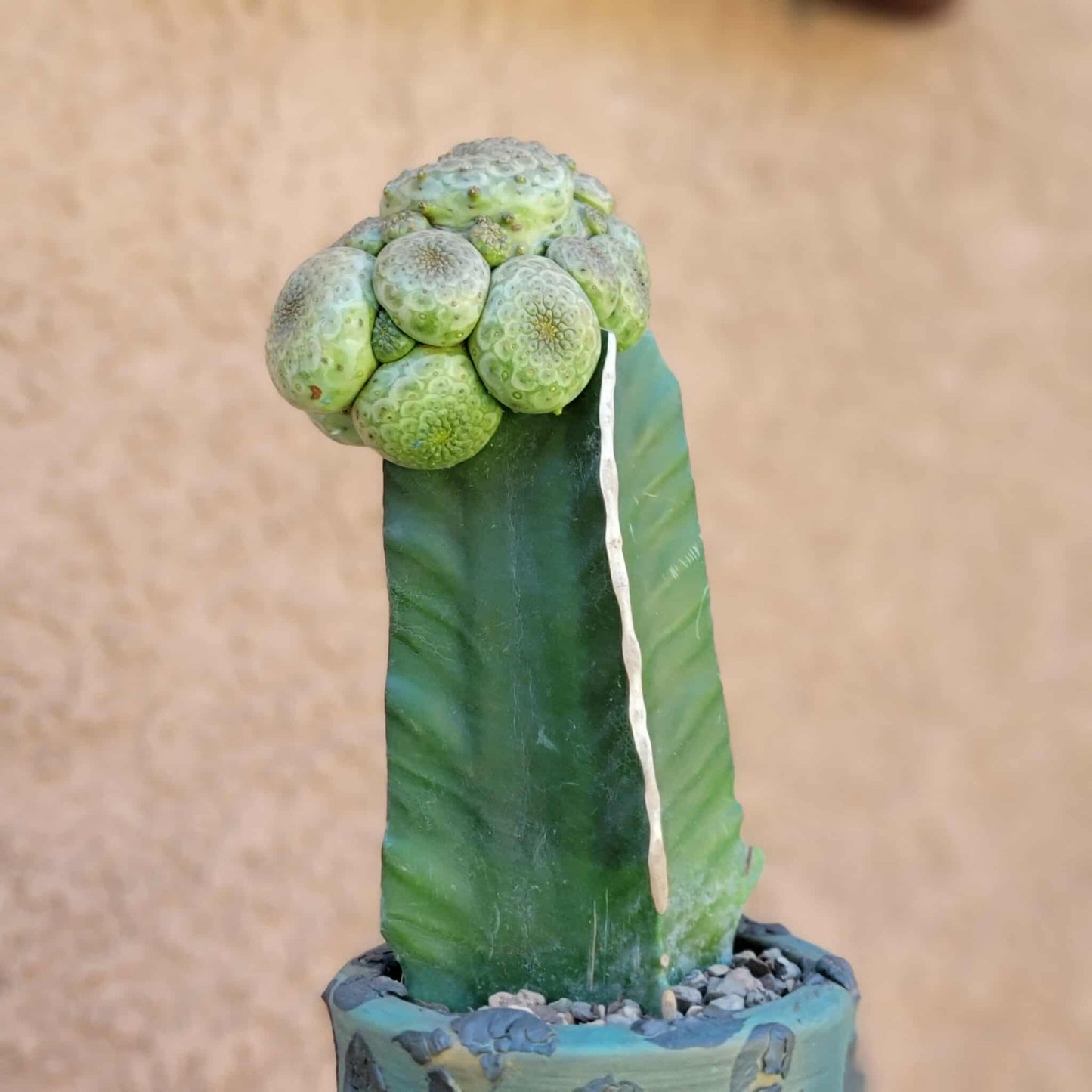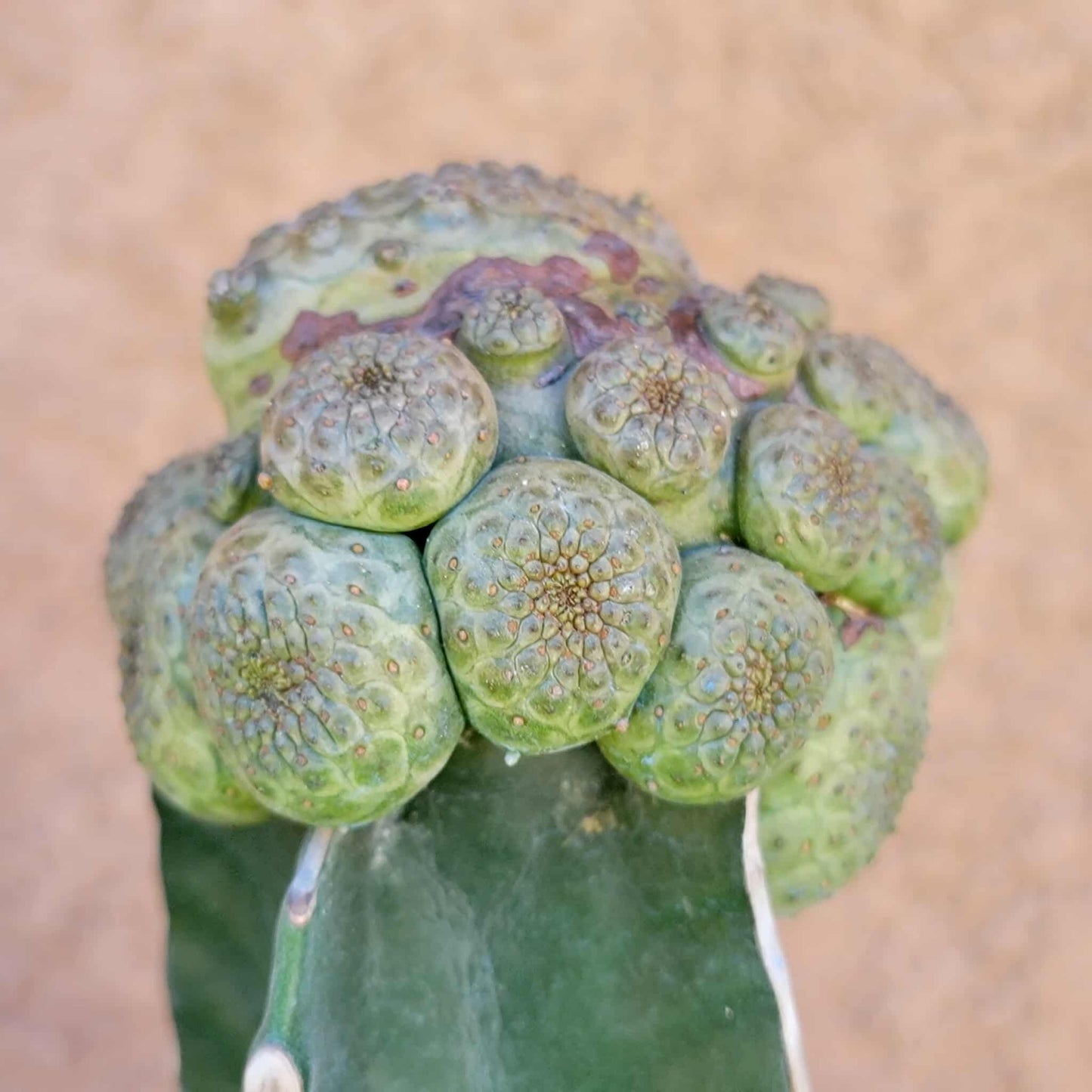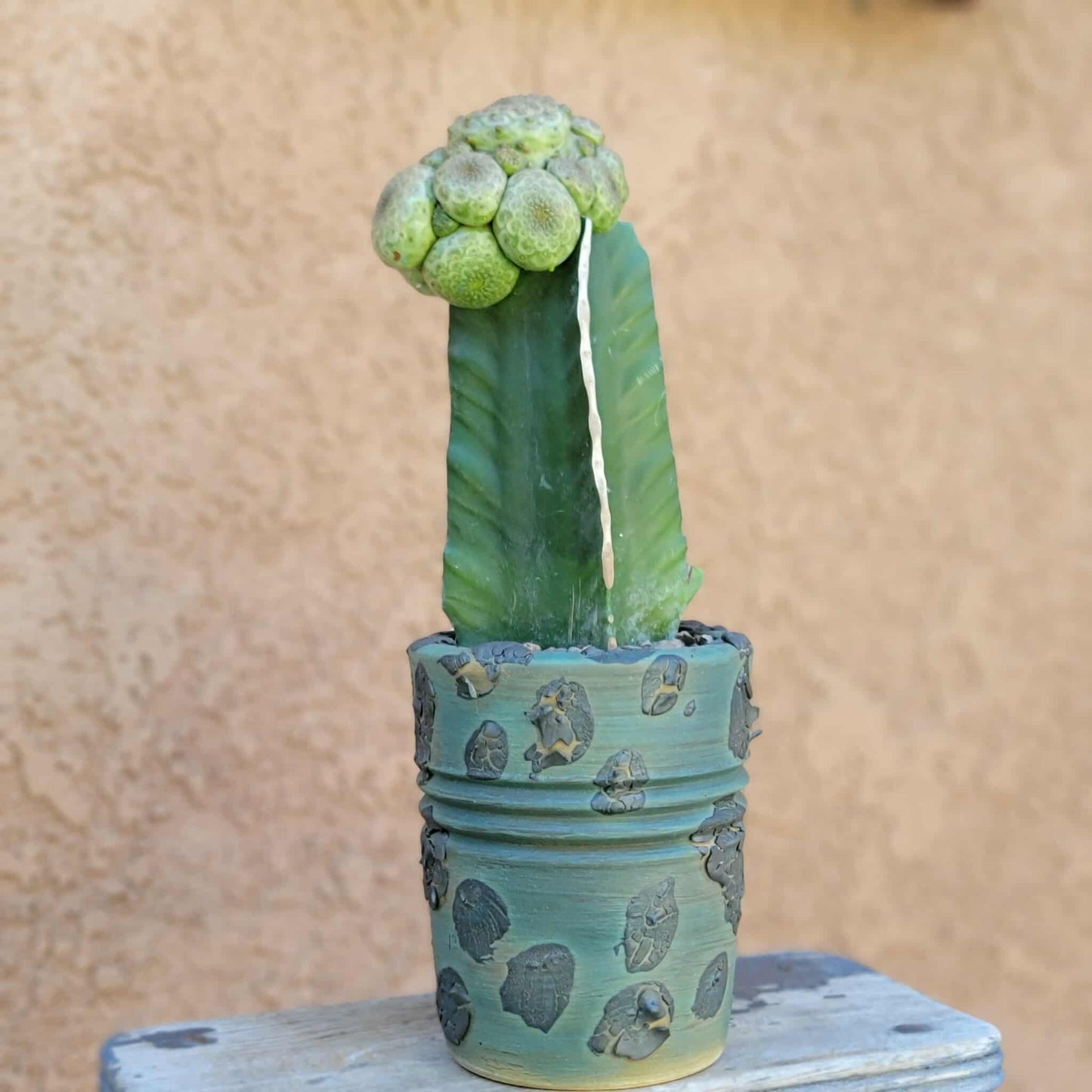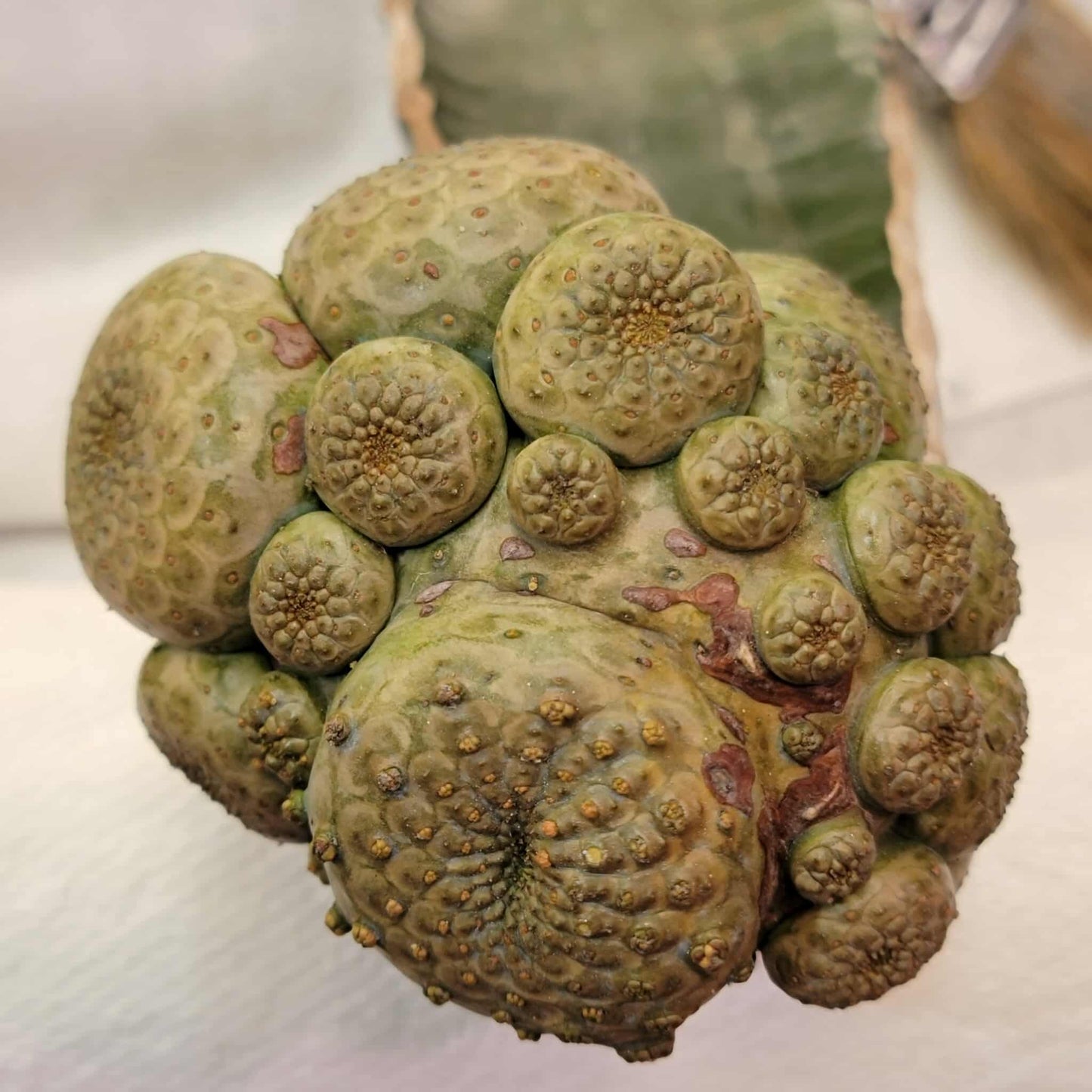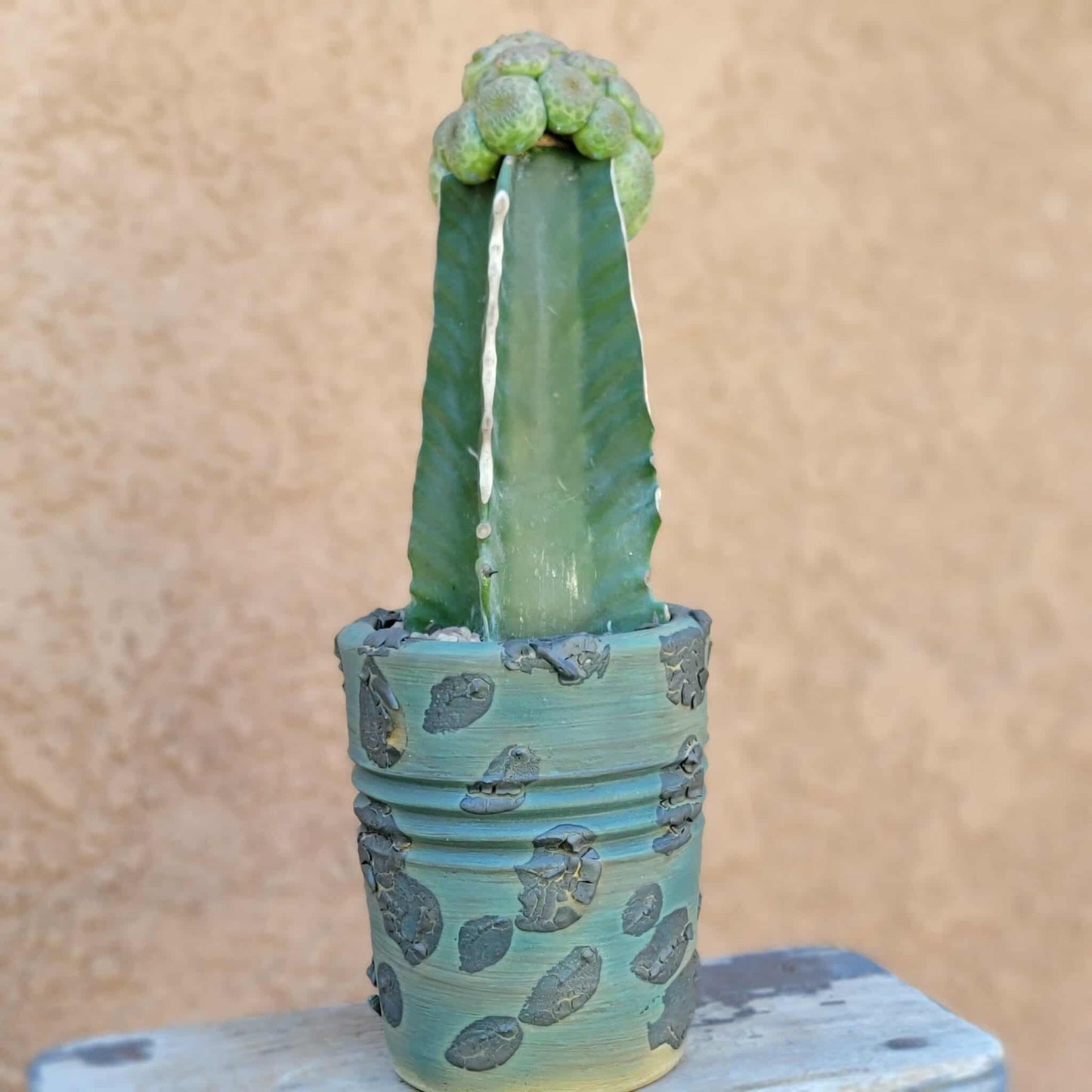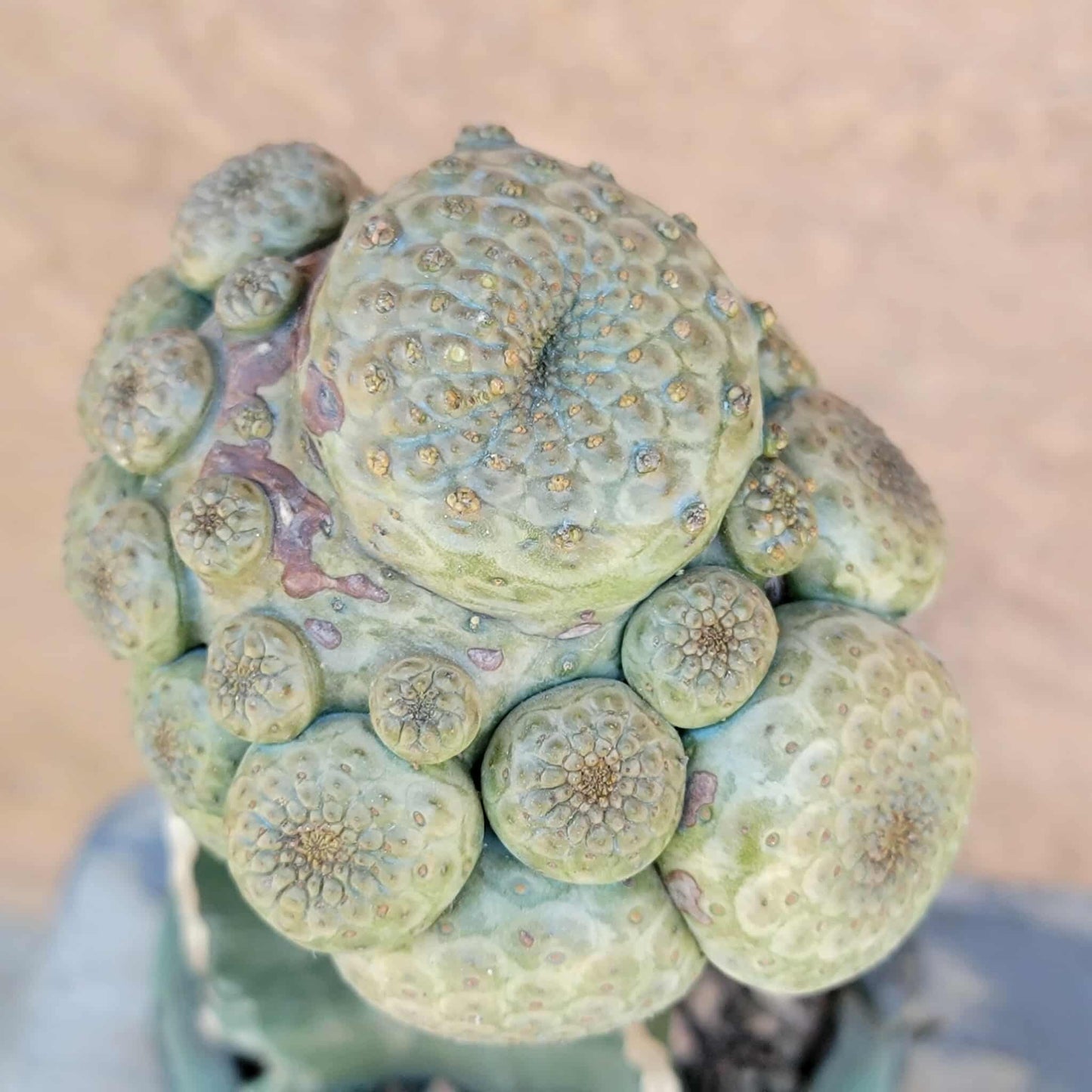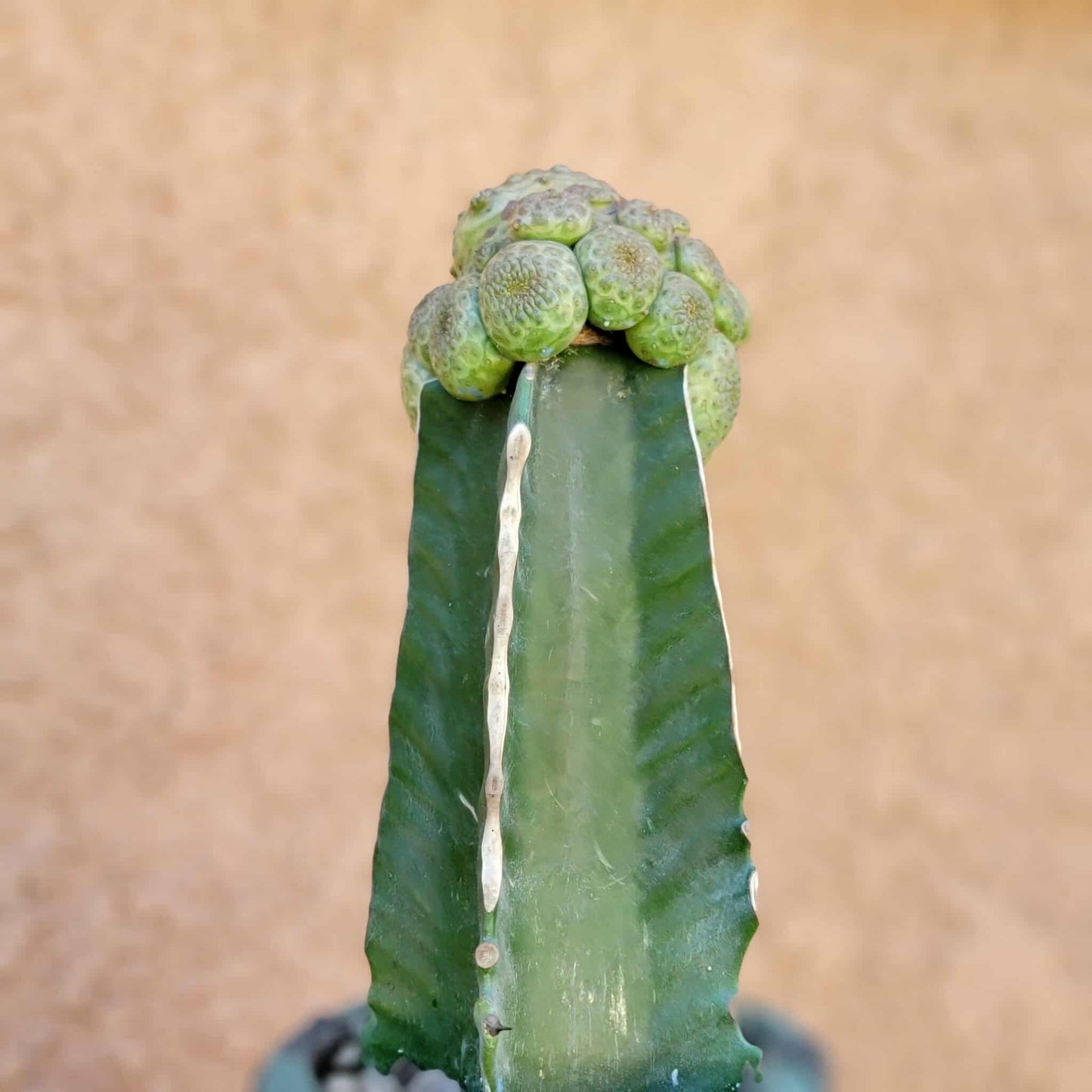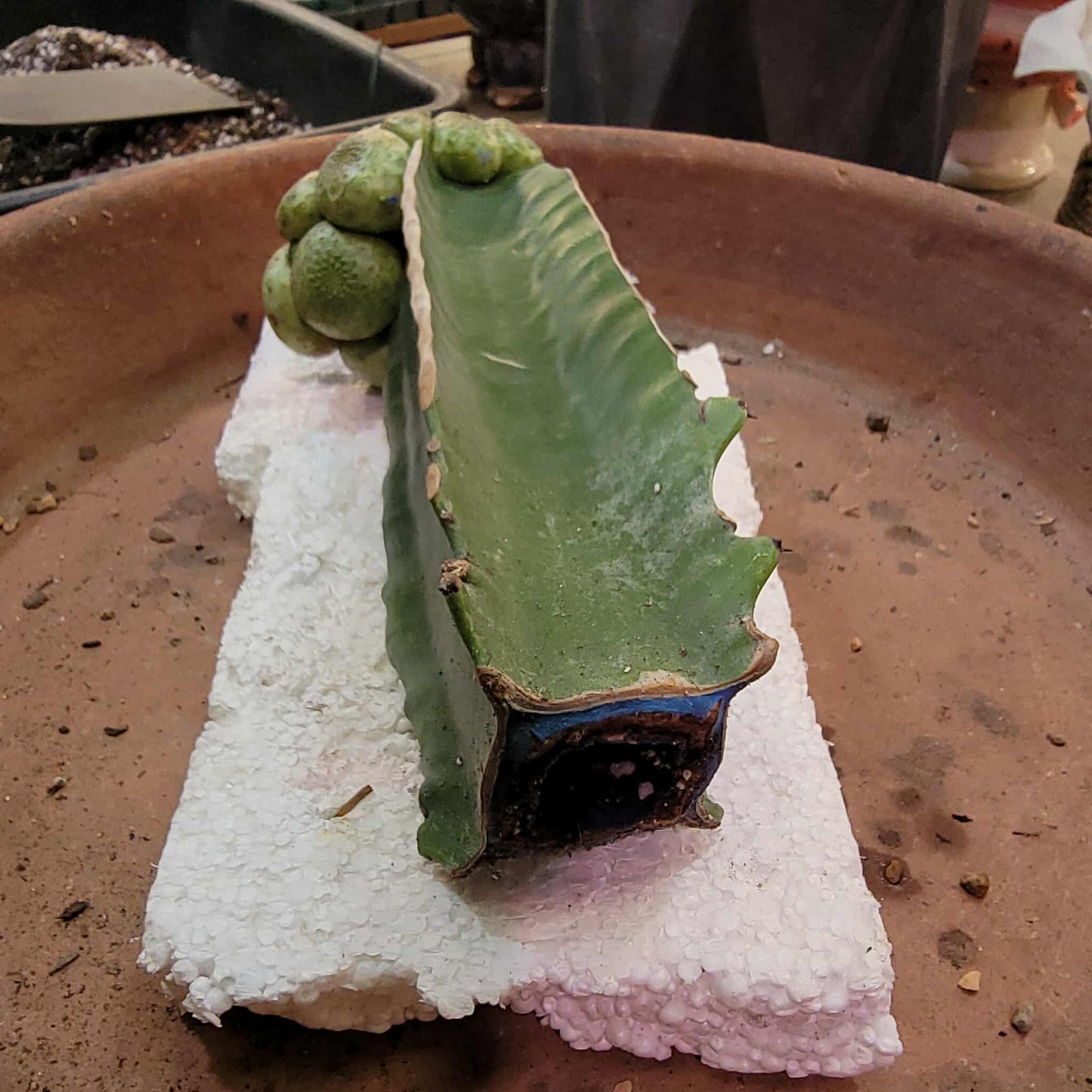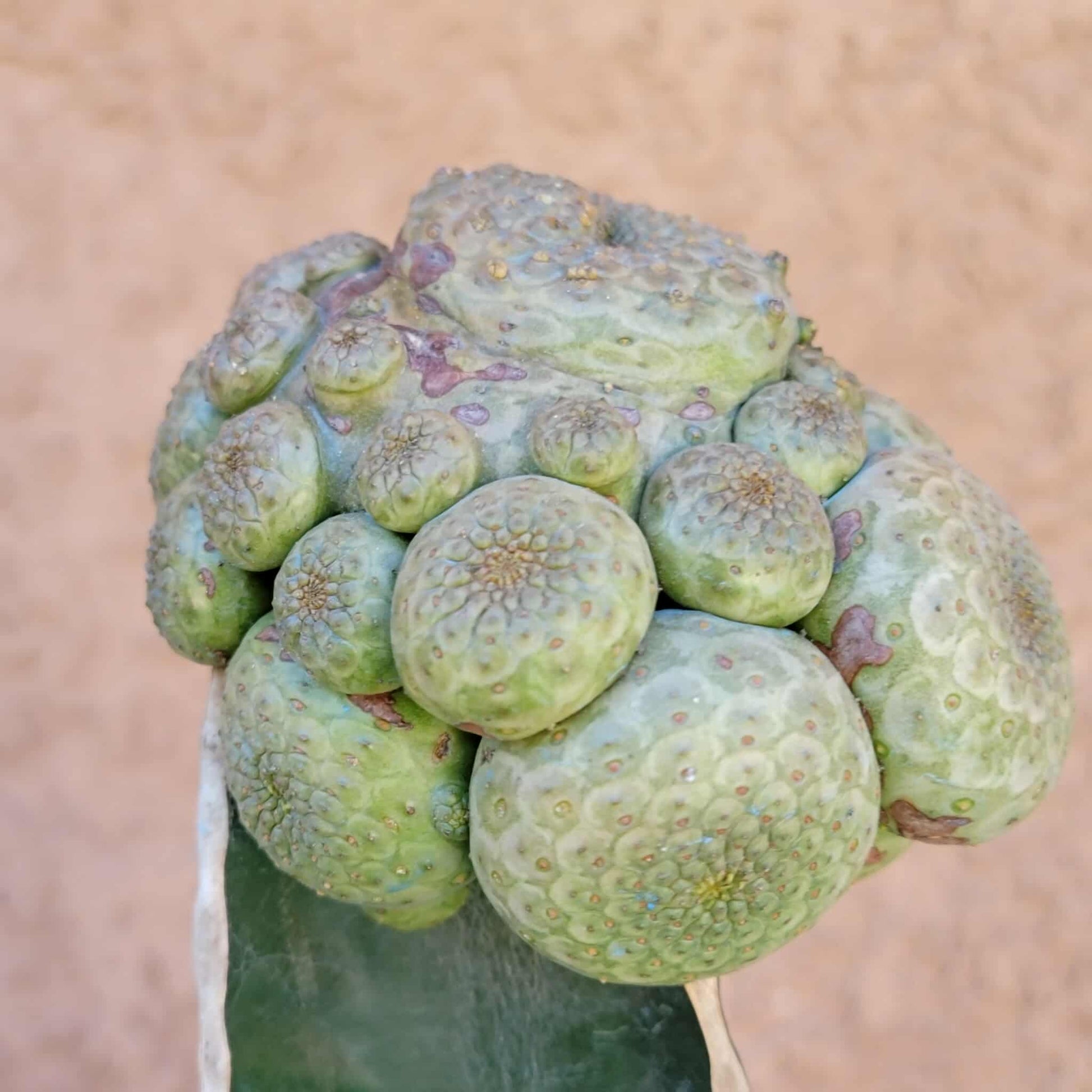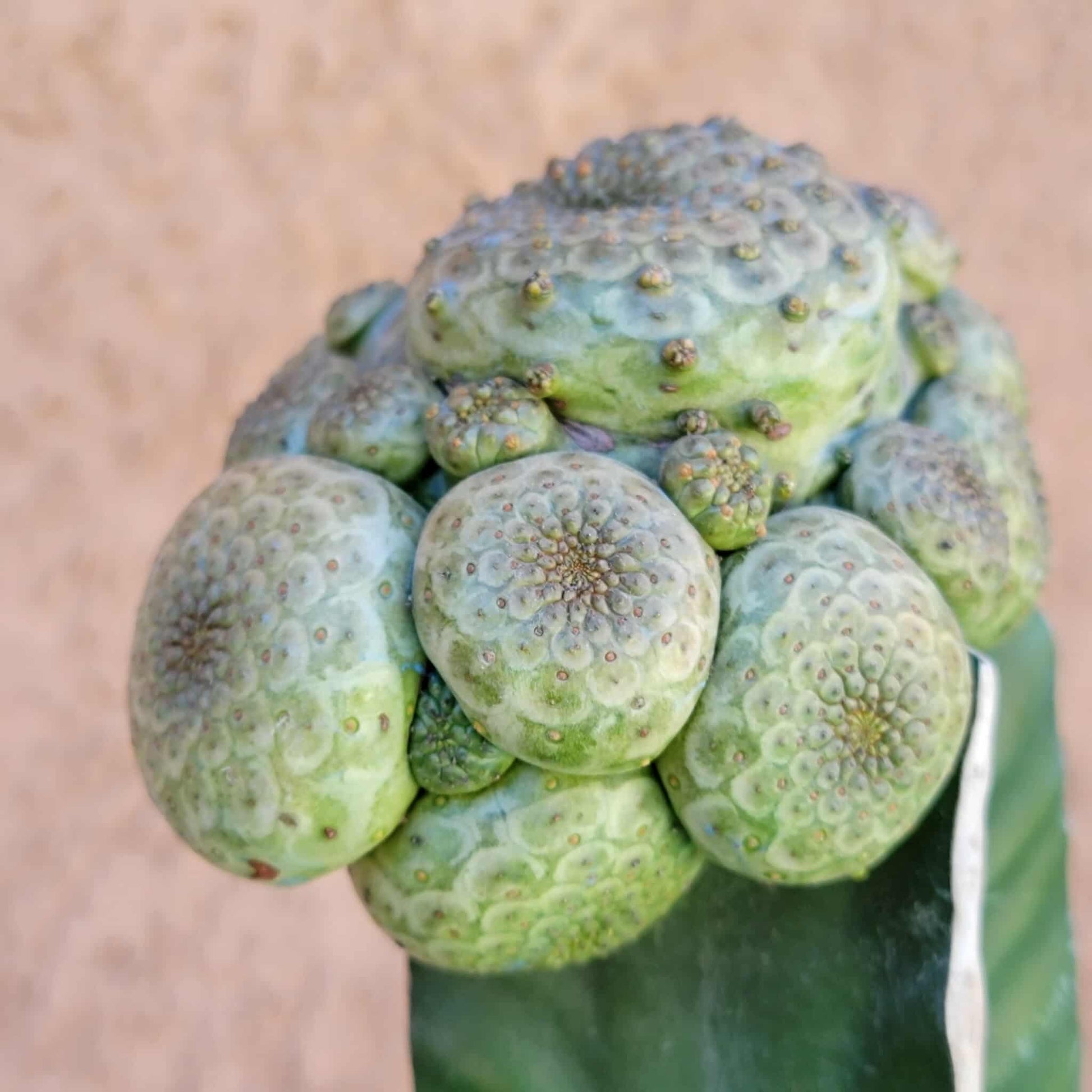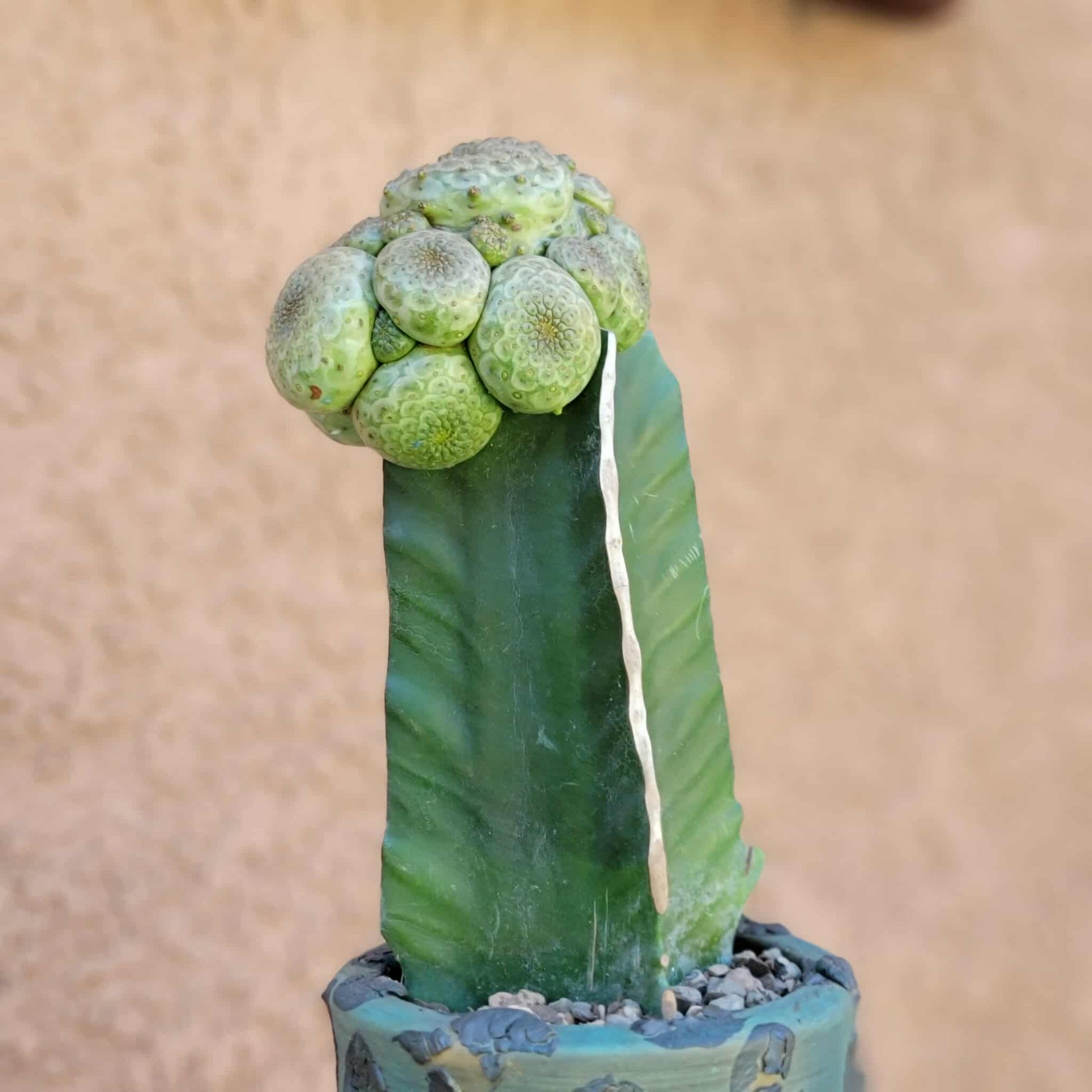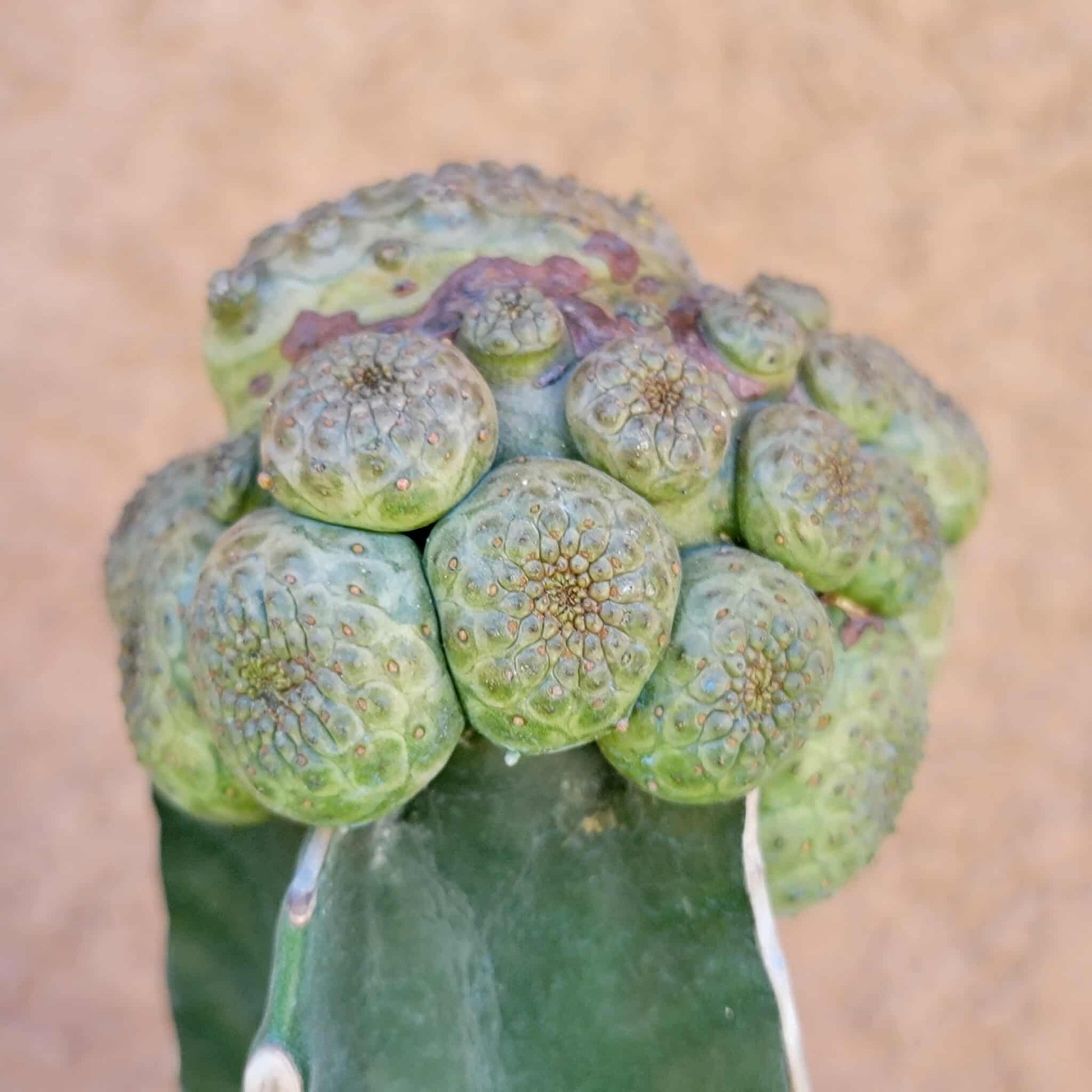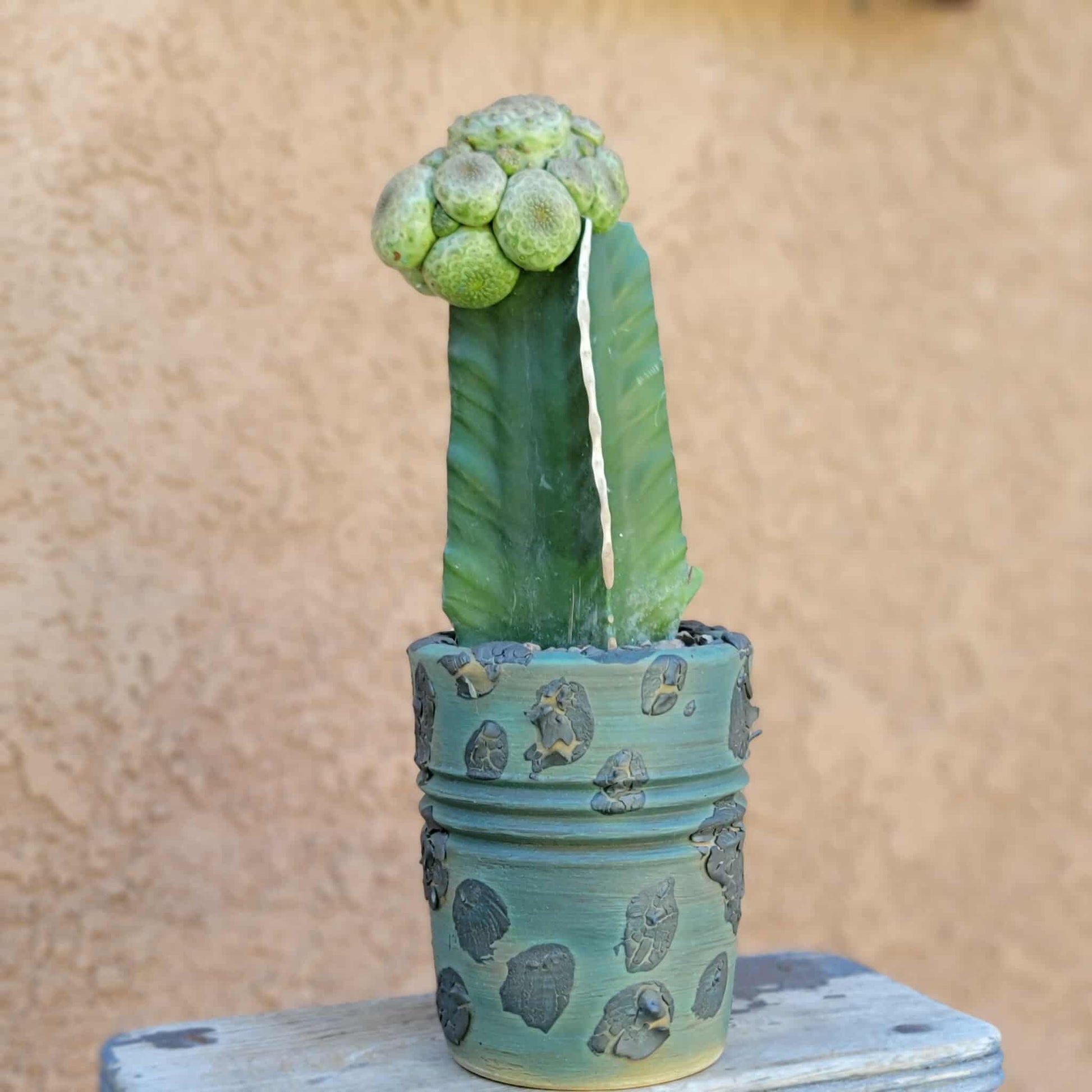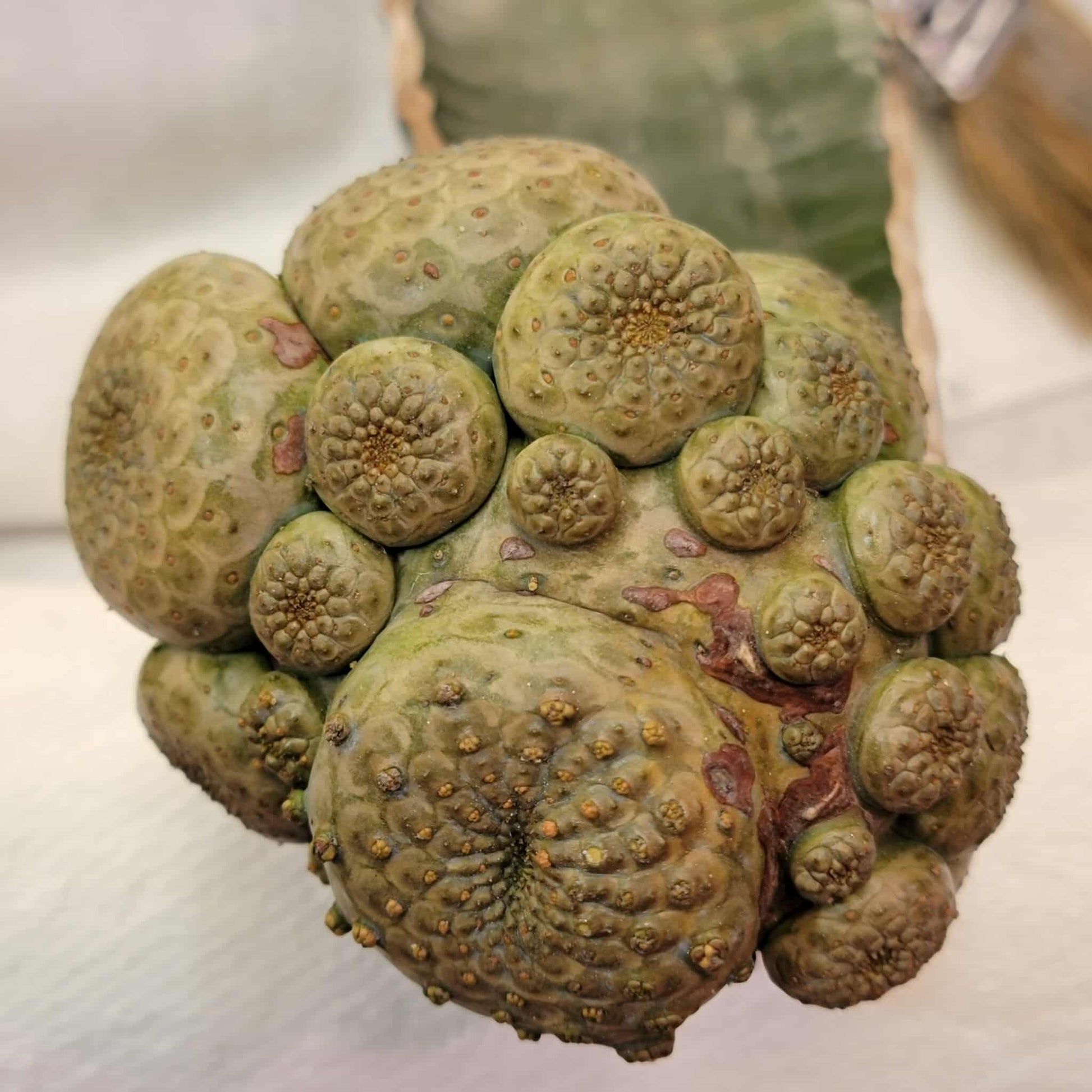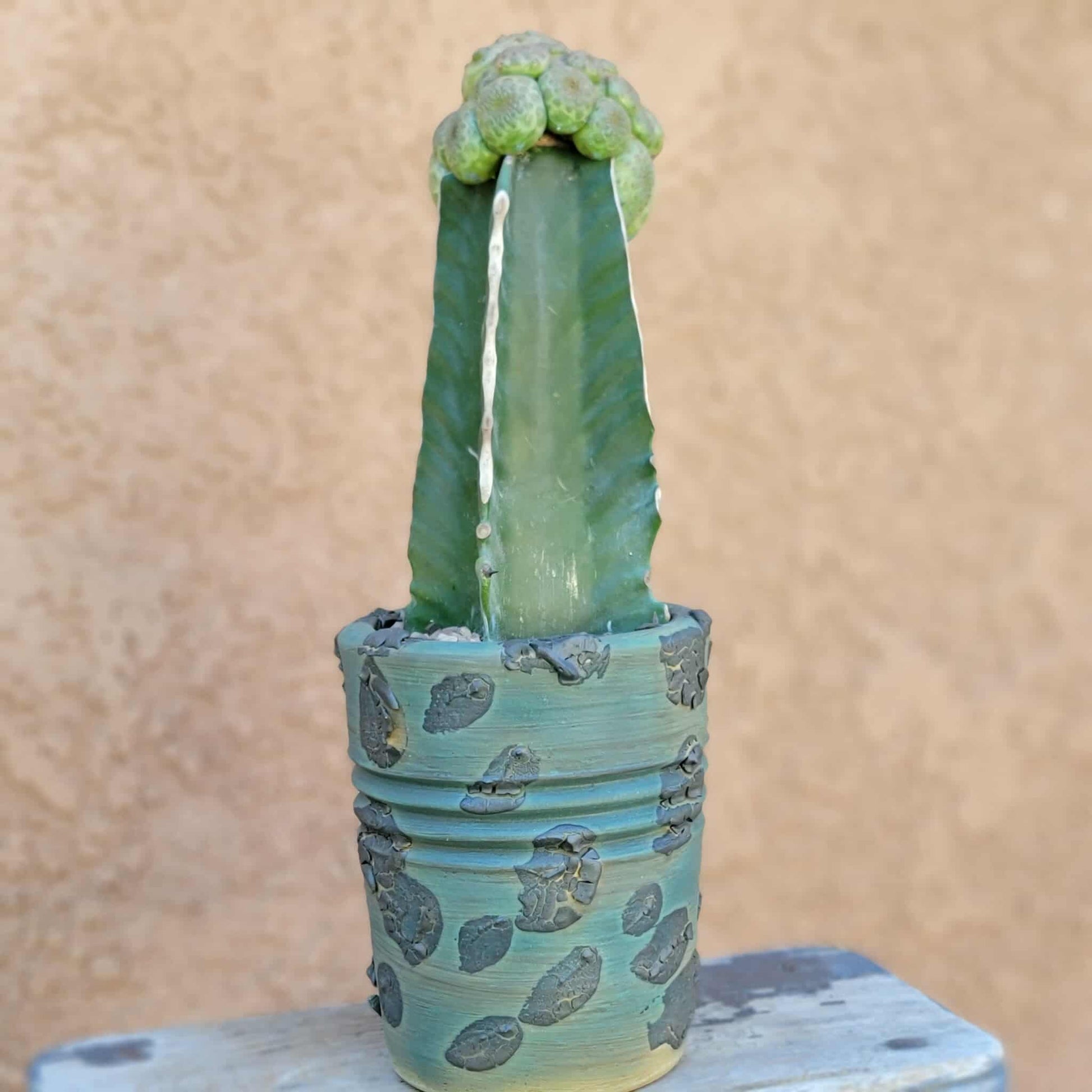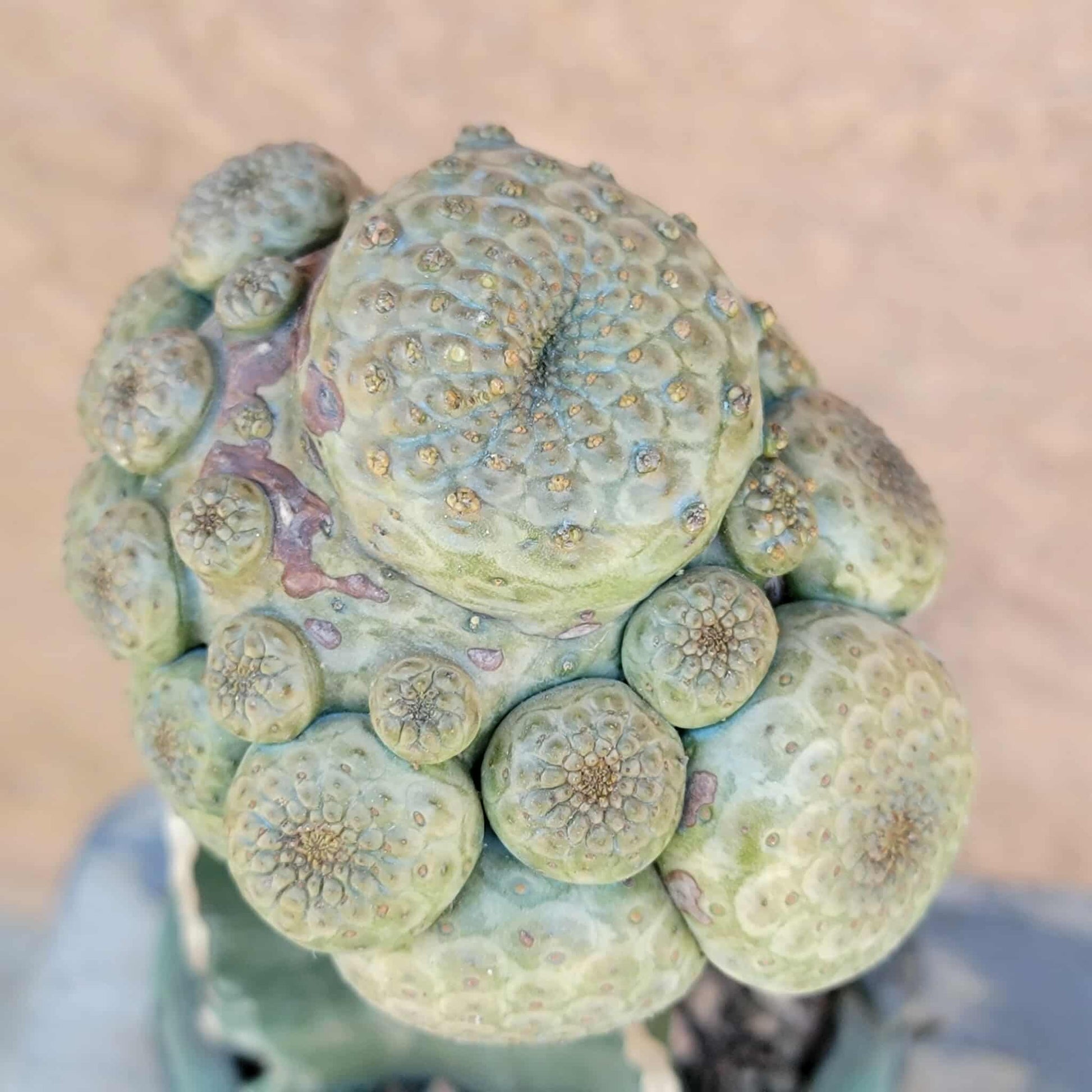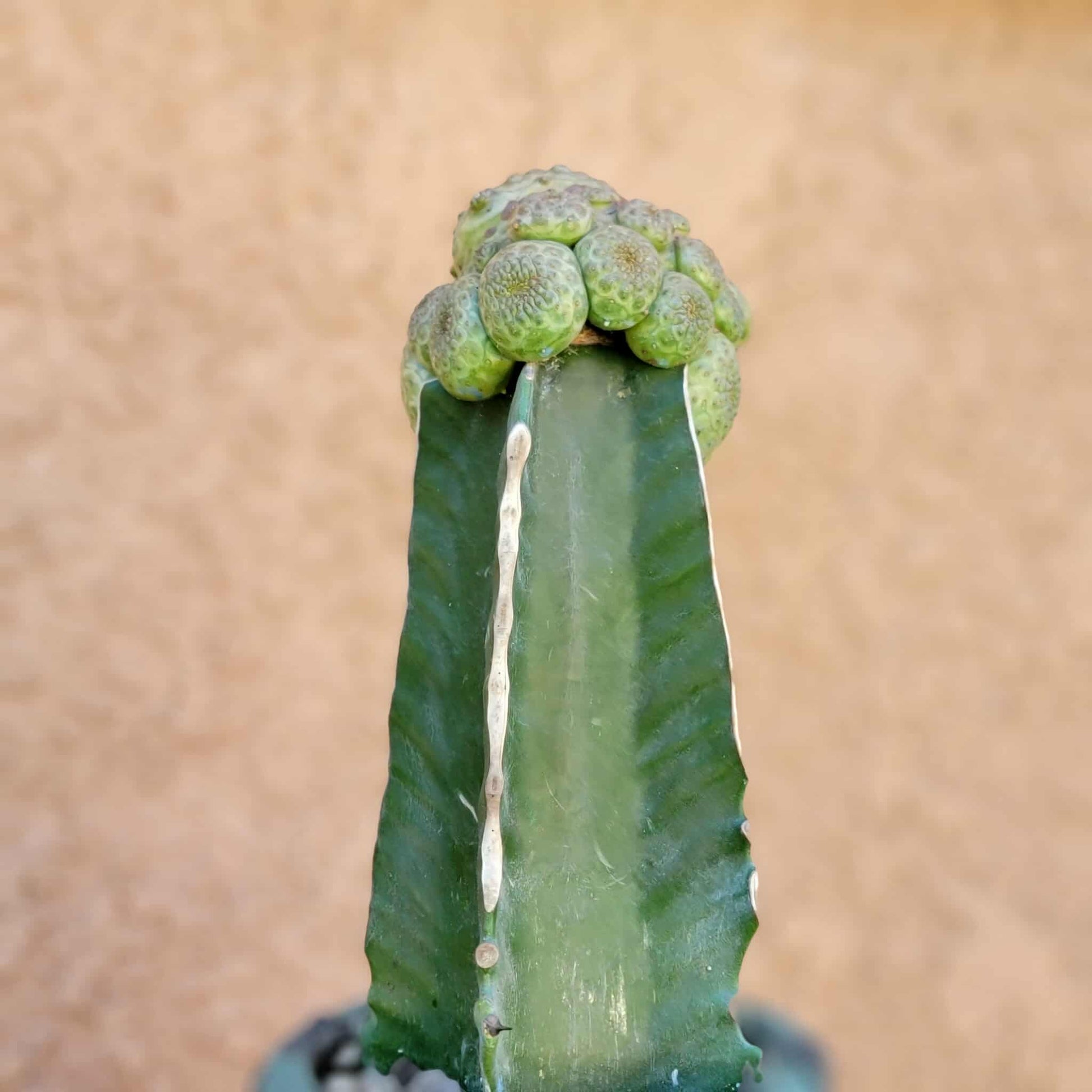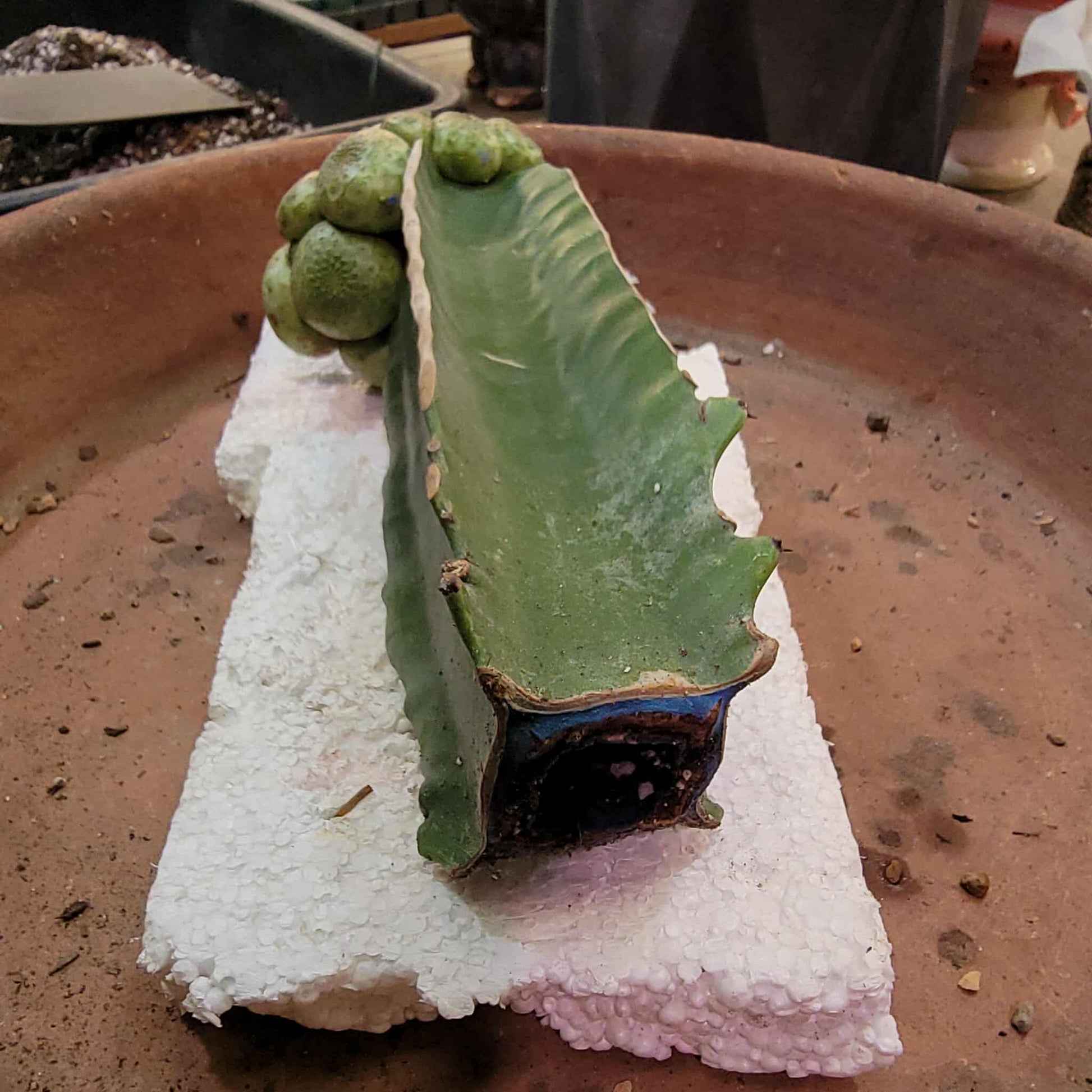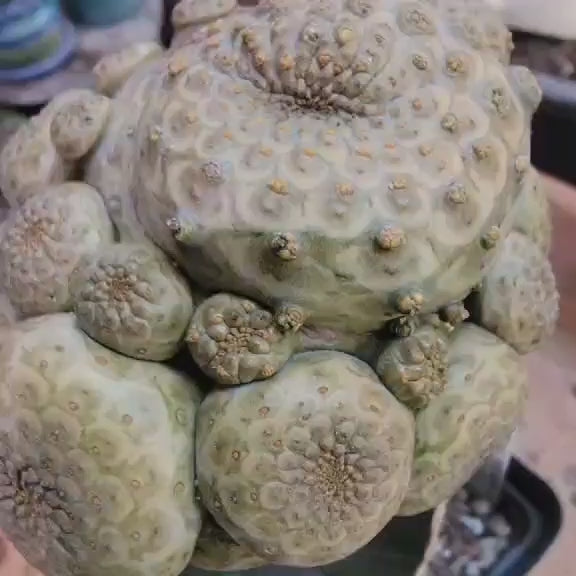Shangri-Ha Cactus Ranch
Euphorbia turbiniformis - HUGE - So many heads!!
Euphorbia turbiniformis - HUGE - So many heads!!
Couldn't load pickup availability
Euphorbia turbiniformis
You will receive this exact, grafted, AMAZING specimen.
Scion measures 3.75" wide x 2.75" tall!
Entire specimen measures 7” tall above the soil line.
Rootstock has no roots yet but they grow easily.
Showcased here in one-of-a-kind handmade pottery (sold separately).
Will be shipped bare root.
Euphorbia turbiniformis is a rare and unique dwarf, spineless, globose succulent native to the arid northeast regions of Somalia. It is known for its beautiful tessellated markings and smooth, round appearance, setting it apart from many other succulents.
Key features
- Appearance: Dwarf, spherical or turbiniform stems, typically 4 cm tall x 4-6(-8) cm in diameter, growing partially buried in the soil. Smooth, shining, light-green epidermis with spherical patterns and dark spots around buds.
- Spines: Mature specimens are thornless; spines are only present as vestigial, inconspicuous structures on very young seedlings.
- Flowers: Produces small, yellow cyathia (both male and female) on short peduncles at the apex of the plant body.
- Growth: Slow-growing, long-lived plant.
- Habitat: Found on limestone plateaus at low elevations around 300 meters.
- Toxicity: Like other Euphorbias, it exudes a thick, white milky sap (latex) when damaged, which is poisonous and can irritate the skin and eyes. Wear gloves when handling and keep away from children and pets.
Cultivation and propagation
- Difficulty: Euphorbia turbiniformis is considered a sensitive and difficult plant to grow on its own roots, making grafted specimens more readily available. Grafting involves joining the stem of Euphorbia turbiniformis to a more vigorous rootstock, often Euphorbia canariensis, to improve its survival and growth rate.
- Light: Prefers bright, indirect light; too much direct sun can cause scorching.
- Soil: Requires well-draining cactus or succulent potting mix; good drainage is crucial to prevent root rot.
- Watering: Drought-tolerant; water only when the soil is completely dry. Reduce watering in winter when the plant is dormant.
- Temperature: Needs warmth; keep above 13°C (55°F) for healthy growth. Avoid cold temperatures.
- Fertilization: Doesn't require much fertilization; repotting once a year should provide enough nutrients.
- Propagation: Can be propagated from seeds or stem cuttings, but seedlings are difficult to establish on their own roots and are best grown grafted.
